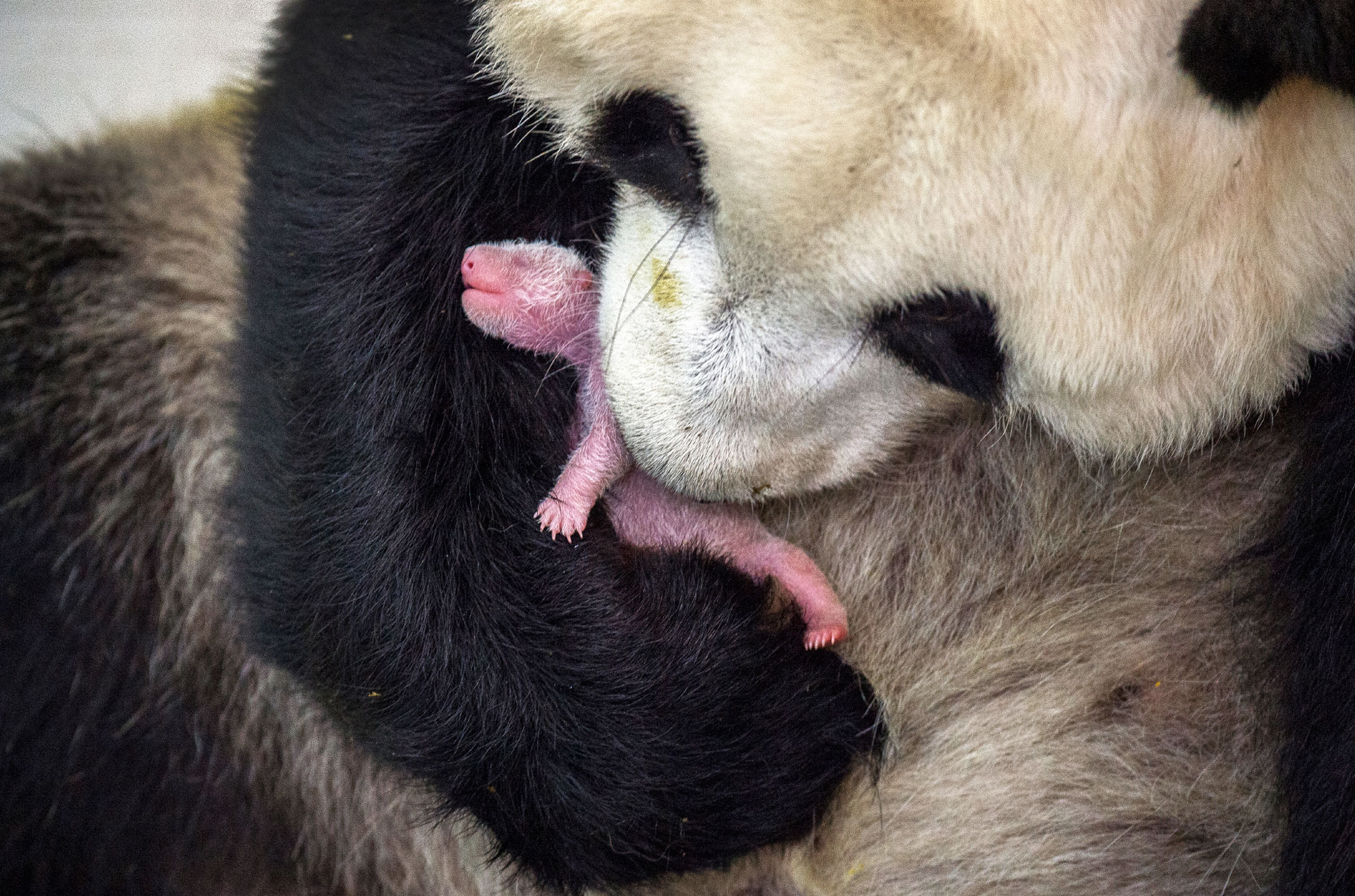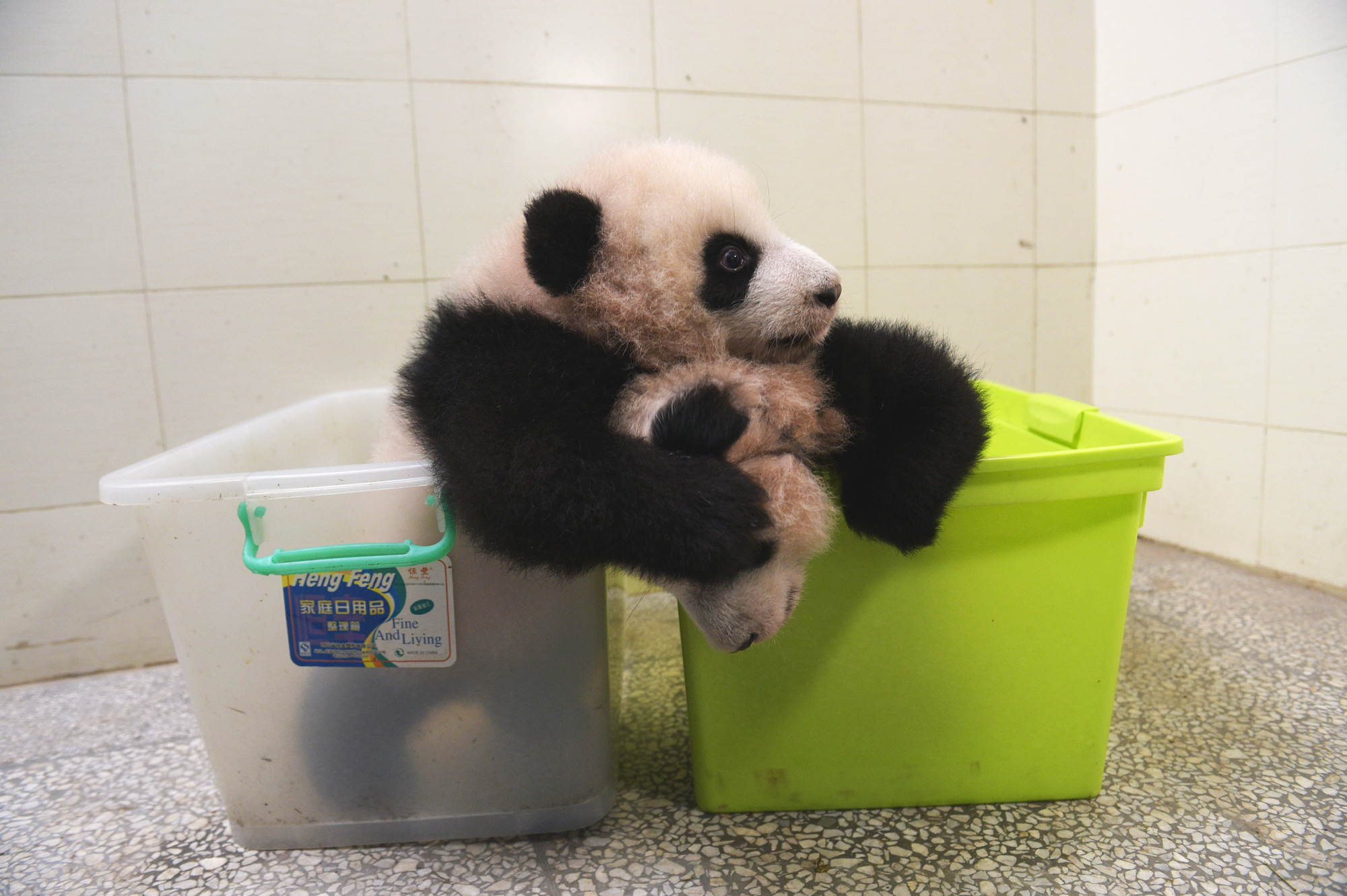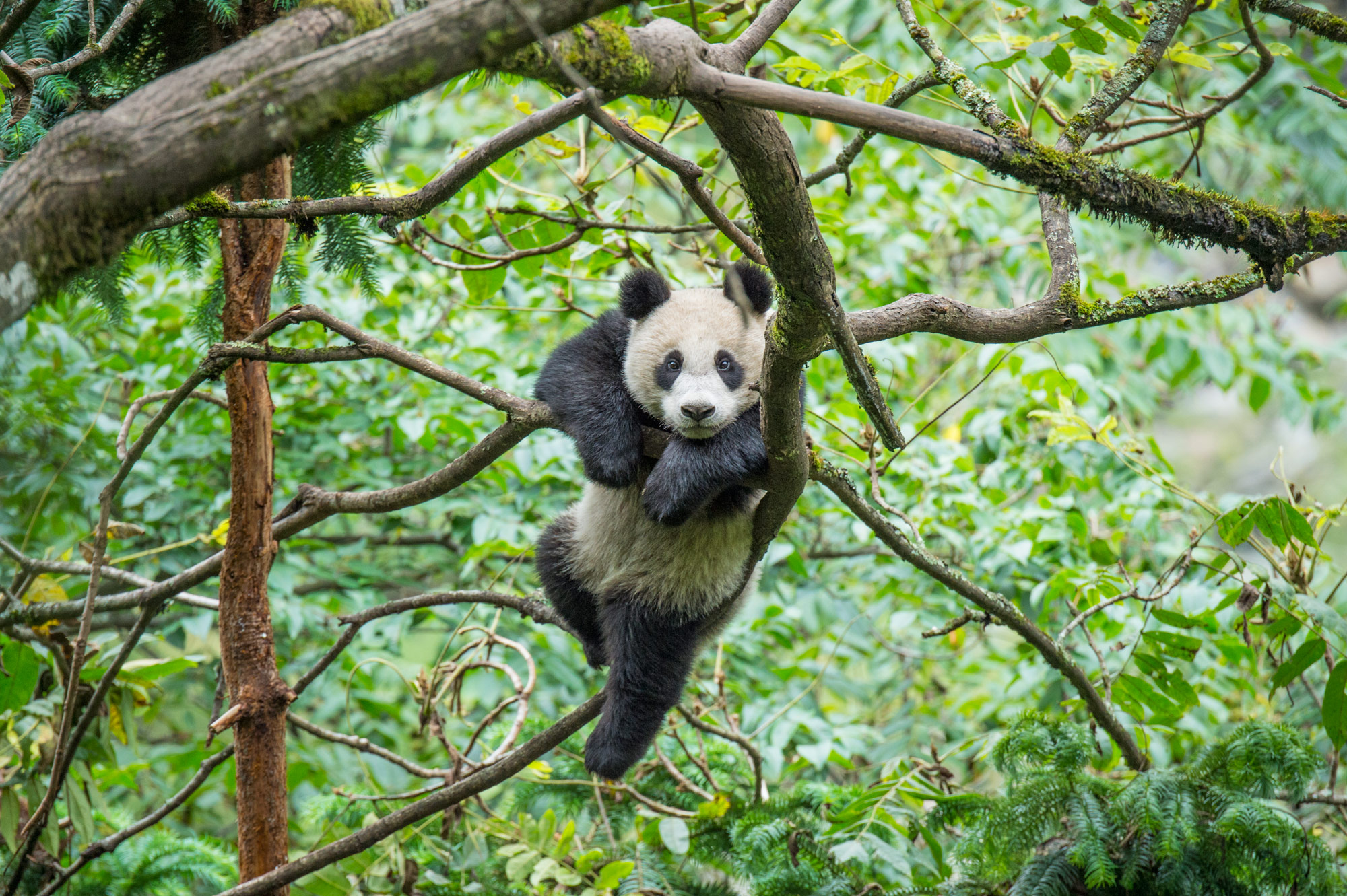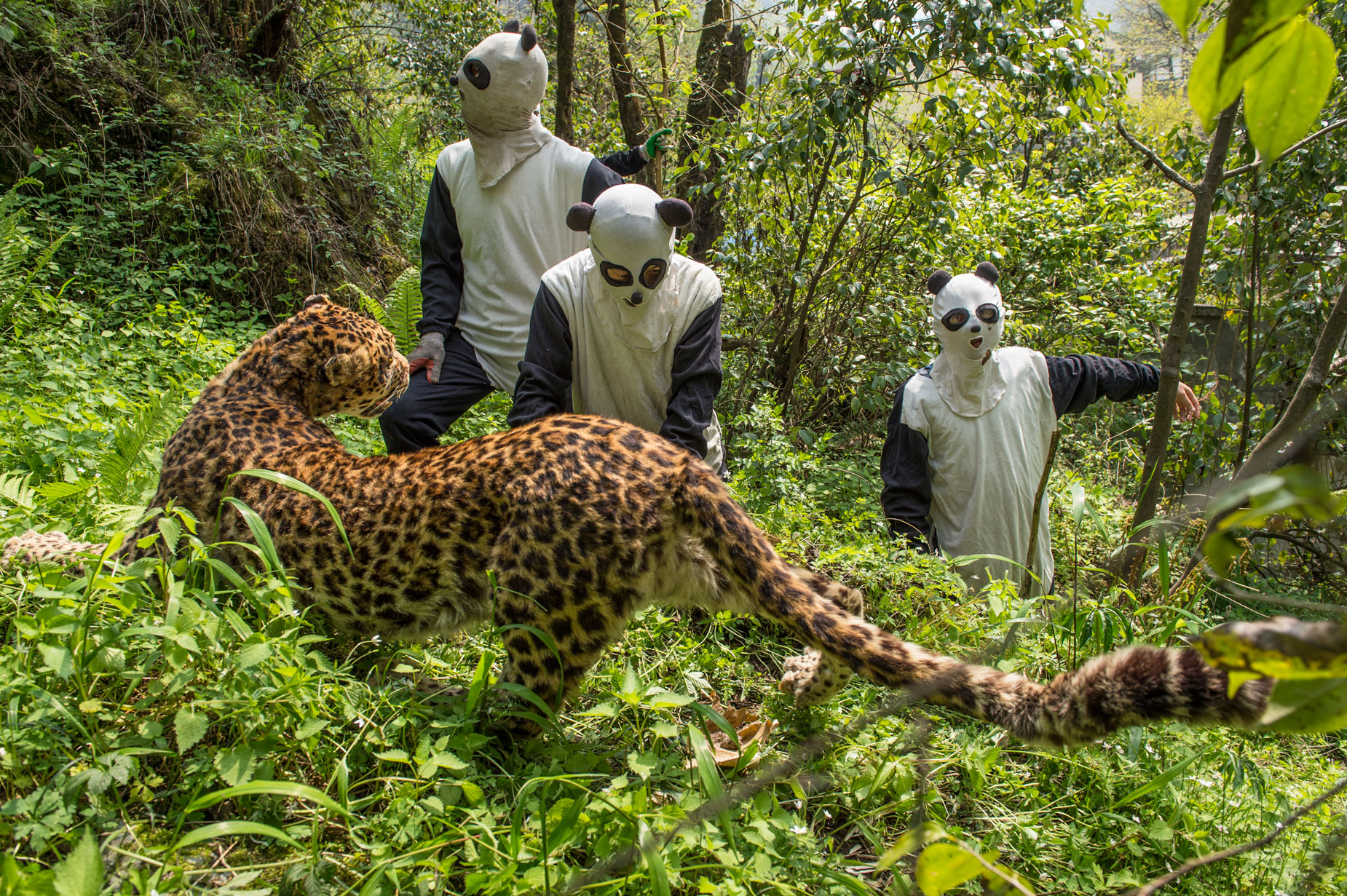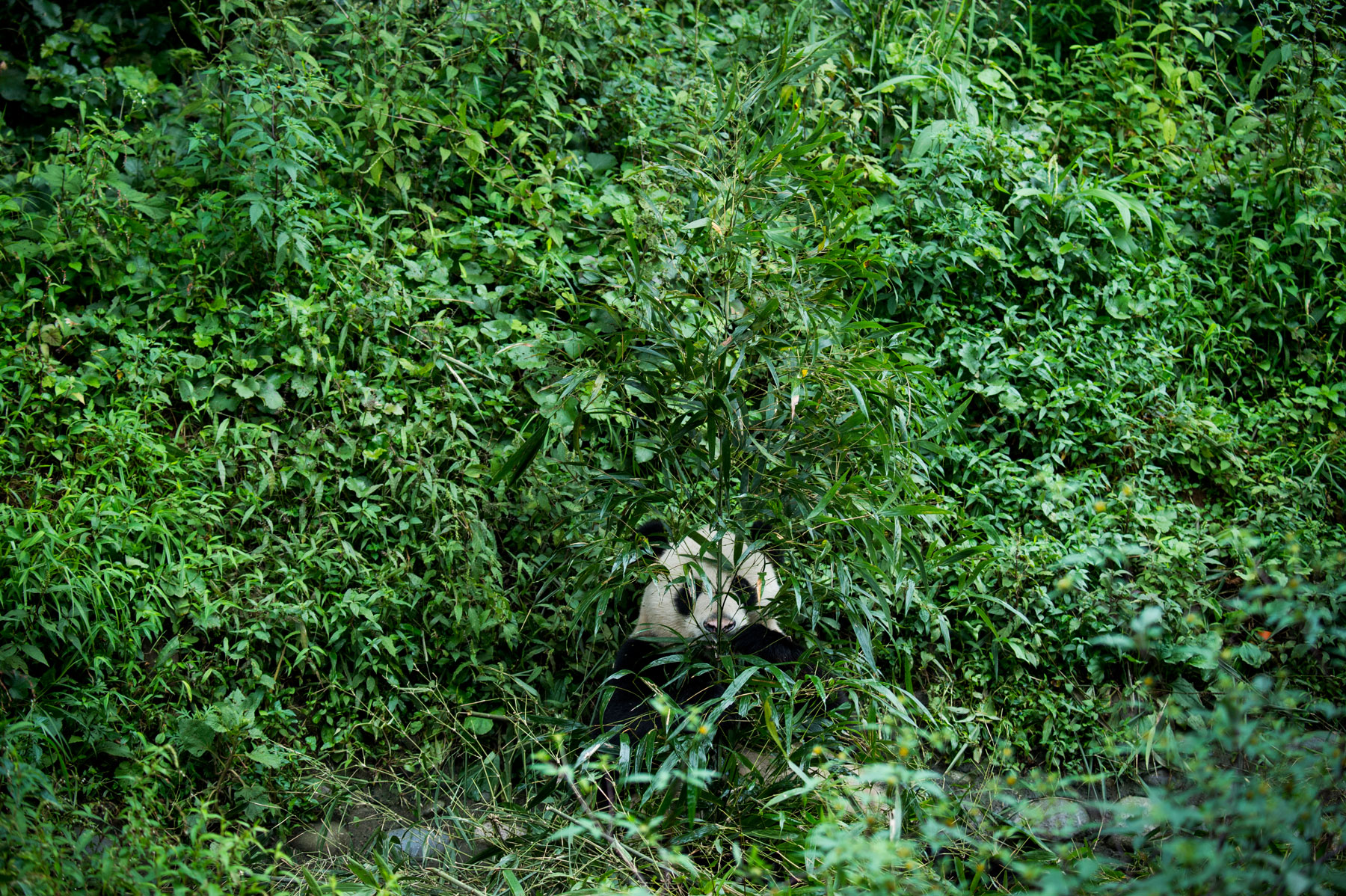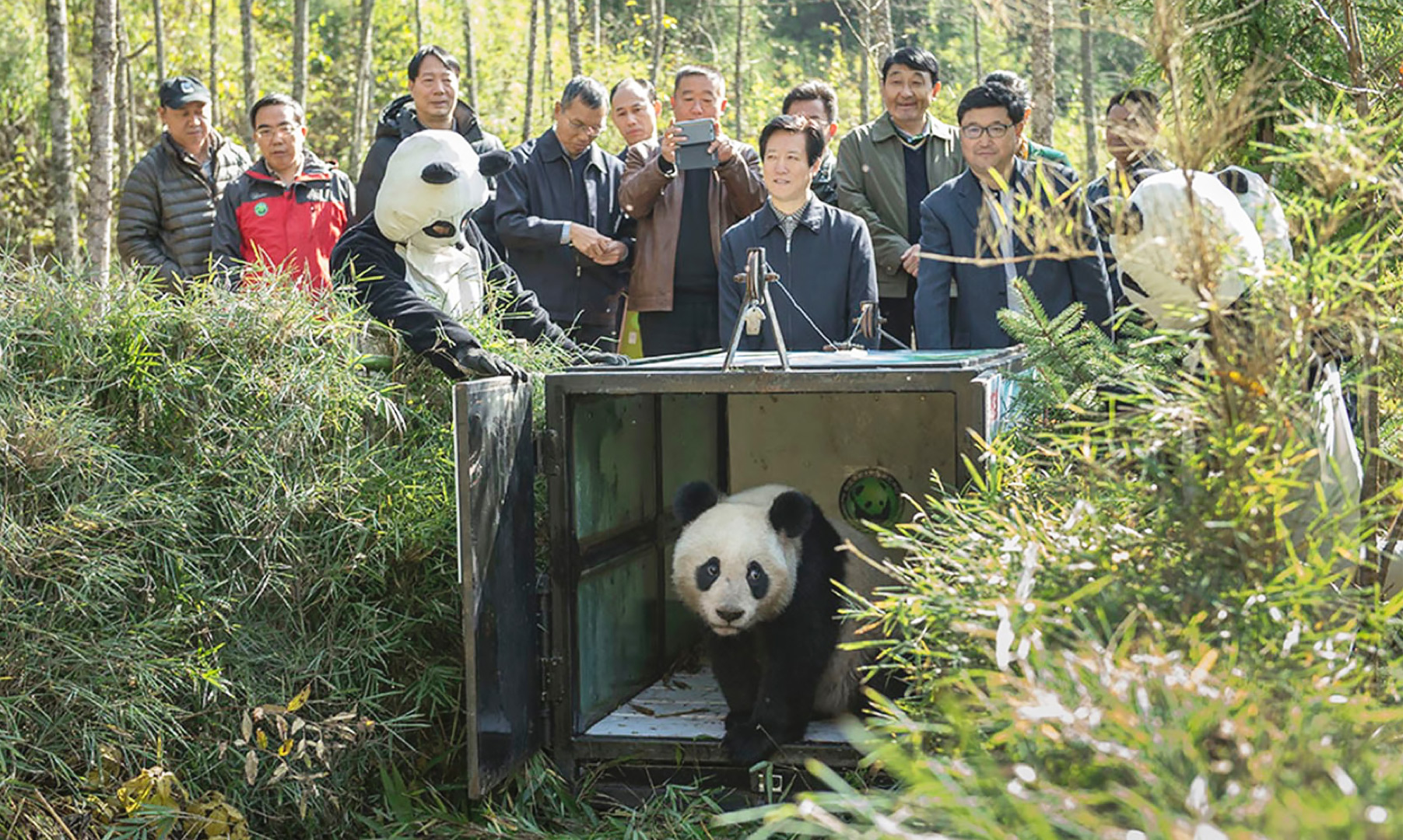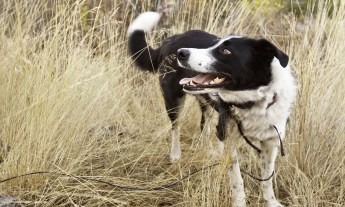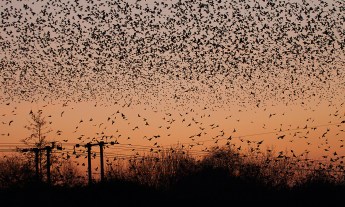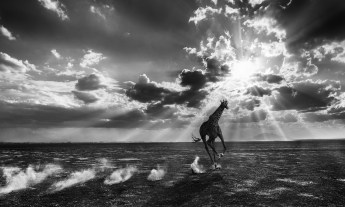At this conservation center in central China, captive-born pandas go through a gradual, carefully monitored process to prepare them for lives in their natural habitat. Photographer Ami Vitale shows how they go from wriggly newborns to independent adventurers.
In September 2016, animal lovers breathed sighs of relief when the conservation status of the giant panda was upgraded from “endangered” by the International Union for Conservation of Nature. OK, pandas are still deemed “vulnerable,” but the species’ population has risen 17 percent in the last decade, thanks in large part to breeding programs in China. Now conservationists are working on the next step in species restoration: increasing panda numbers in the wild.
Photographer Ami Vitale (TEDxWanChai talk: The power of a panda), who is based in Montana, was granted rare access to document the pupils at China’s “panda wilderness school” — a program that helps prepare captive-born pandas for release — at the Conservation and Research Center for the Giant Panda in Wolong in the Sichuan province. She was drawn to the project after researching and learning about the richness and complexity of panda history and biology. “Pandas have been on the planet for eight million years, but the first panda was only captured alive in 1936. It’s mind-blowing when you think this animal remained hidden and elusive for millions and millions of years,” she explains. Here, Vitale shares her images and shows how researchers, caretakers and doctors ready pandas for independent lives.
A tiny, pink and hairless start
Pandas weigh about as much as a stick of butter — around 3–5 ounces — at birth. Since newborns have no hair, they can’t stay warm on their own, so their mothers hold them on their sternums for their first weeks of life. At Wolong, panda moms give birth on their own and raise their cubs in an area of the reserve that has been fenced off from predators. Each mother-cub pair has its own enclosure, and while humans are constantly watching (there are cameras everywhere), moms are left alone to care for their babies as naturally as possible.
Not all pandas can be wild pandas
Still, humans step in when necessary. A mother panda can raise only one needy little youngster at a time — even if she has twins. “About 50 percent of the time, pandas give birth to twins,” Vitale says. “In the wild, the mom would let the weaker one die,” but at Wolong, the rejected baby is taken to a separate nursery to be raised in captivity. (It’s paired with a surrogate panda mom, and it’s swapped between the panda mother and a human caretaker until it’s old enough to be with its panda mother full time.) Zhang Hemin, director of the Wolong center, monitors every panda from the moment it’s born, and cubs that show any sign of illness or frailty are also sent into captivity. Here, two toddlers at the Giant Panda Breeding and Research Center in Bifengxia — a captive center — wait in tubs while their enclosure is being cleaned.
A panda keeper is a dream job — with a huge catch
At Wolong, human interaction with their black-and-white charges is limited to periodic, rare health checks. And keepers must always wear panda costumes — scented with panda urine and feces — so that pandas never grow accustomed to human contact. “The center doesn’t want panda babies to ever see a human or even smell a human,” says Vitale. “As a photographer, I had to work around this need to not impact their biology and conservation, and it was probably one of the hardest stories I’ve ever had to do.” To check on cubs, keepers wait for a mother to leave her baby and go forage for food. As soon as she walks off, humans race to examine and weigh the cub before she returns. Here, a cub gets a two-month checkup from a keeper.
Growing fast
Panda babies come into life blind and helpless, but by one month, they can see and they start to crawl at around the same time (weighing roughly four pounds); at four months, they begin to walk (by then, they’re up to 11-15 pounds); and at six months, they’re making the gradual transition from a diet of mother’s milk to eating solid foods like bamboo. By their first birthday, they may weigh over 80 pounds.
Climbing to independence
Healthy panda babies and their mothers advance to “preschool” at around three months old. During preschool, the young cubs mimic their mom’s behaviors and learn to do adult panda things — like foraging for bamboo, searching for shelter, and investigating their surroundings — by watching her. Of course, there’s plenty of play time, too.
One of the most essential skills that wild-caught moms can teach their cubs is tree climbing. At first, moms usually need to give their babies a boost so they can get down or up trees and start to build their confidence. Climbing is a critically important ability because it’s the main way that wild pandas defend themselves from predators. Mastering a solo climb is one of the requirements before a panda is allowed to graduate preschool.
Passing the predator test
By preschool’s end, cubs are wandering away from their moms more and more; they wean from their mothers between the age of one year and 18 months. To be chosen for independent living, a young panda must be wary of potential dangers. Here, a test predator — a stuffed leopard scented with leopard urine and emitting recorded growls — is being placed by keepers in a cub’s enclosure. “If the panda is curious and runs up and sniffs the leopard, she fails,” Vitale says. “She goes into captivity forever.”
Nearing graduation
After passing the predator test, researchers continue to assess the young pandas to make sure they can thrive without any supervision. The cubs must be able to find food and water by themselves, and they always need to be on the alert for enemies and for potential disasters like floods and earthquakes, which occur in the area. Keepers act like resident advisors and live in a bunkhouse at the base of the reserve, and they track the pandas via GPS collar and observation. If it seems like a panda is struggling in any way — for instance, if it’s losing weight or appears sick — it is retrieved and placed in captivity. Director Hemin hand-selects the few pandas that will get released into the wild.
A grand goodbye
A panda graduation is a momentous event. Vitale (who took this photo while dressed as a tree so as not to scare Hope) was present for the release of Zhang Xiang, or Hope, the first female panda grad from Wolong to be reintroduced into the wild. On Hope’s departure day, Vitale says, “there were no lines of schoolchildren, no Facebook fan pages, but as she trundled off, she took with her the aspirations for an entire species.” (Besides wanting to see the panda they’ve been so closely involved with one last time, the humans present also help serve as impetus for the animal to leave the cage and go off into the wild.) Vitale is inspired by the growth of the panda population. “This is a huge symbol of hope for wildlife and humans coexisting. We’re used to hearing only bad environmental news coming out of China. After decades of effort, they are performing a minor miracle. They rescued a species on the brink of extinction,” she says. “China and the panda remind us all that nature is resilient if we give it a chance to succeed.”
All photos by Ami Vitale.

